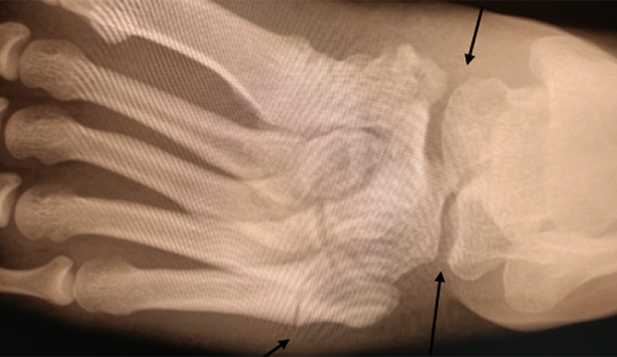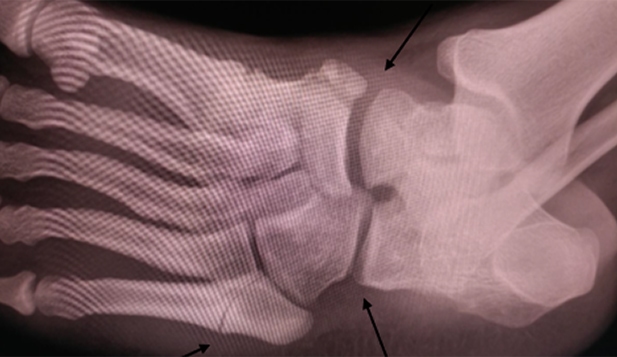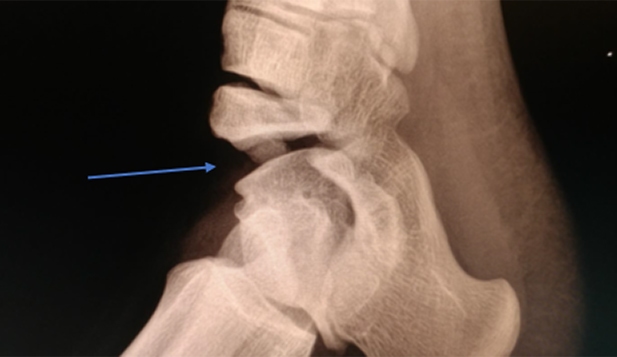Published on
Differential Diagnosis
- Avulsion fracture of the proximal 5thmetatarsal
- Chopart fracture/dislocation
- Jones fracture
- Chopart fracture/dislocation and Jones fracture
- Iselin disease

Figure 1.

Figure 2.

Figure 3.
Diagnosis
This patient suffered a Chopart fracture/dislocation and a Jones fracture.
Chopart fracture: There is widening and asymmetry of the talonavicular and calcaneocuboid joints that are compatible with dislocation. Fractures of the medial aspect of the navicular and medial cuneiform are noted.
Jones fracture: In this case, there is fracture of the proximal aspect of the fifth metatarsal in the region of the metadiaphyseal junction. Asymmetric thickening of the lateral aspect of the fifth metatarsal cortex suggests prior injury and refracture.
Learnings
- Chopart fracture/dislocation
- This relatively uncommon injury involves the midtarsal joints (talonavicular and calcaneocuboid joints). There are frequently associated fractures of the calcaneus, cuboid, and navicular
- Typically caused by falls from a height, motor vehicle accidents, and severe twisting injuries such as can occur in basketball players who land on a plantar-flexed and inverted foot
- Jones fracture
- Jones fractures are located at the metadiaphyseal junction, approximately 2 cm (1.5-3 cm) from the tip of the 5th metatarsal
- This area receives less blood and is therefore more prone to difficulties in healing, with rates of nonunion as high as 30%─50%
- Typically caused by forced inversion of plantarflexed foot
Acknowledgment: Images courtesy of Teleradiology Specialists.
A 16-Year-Old with Severe Pain and Immobility After a Basketball Mishap
1 2
